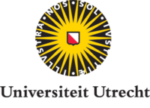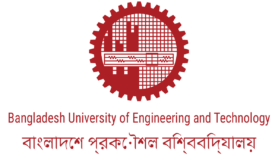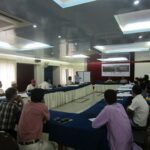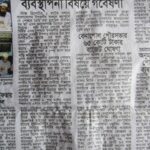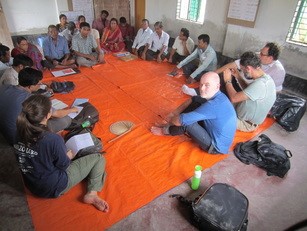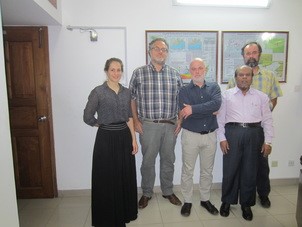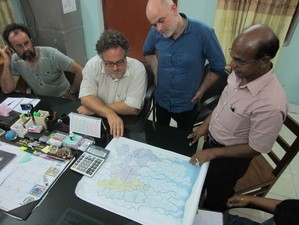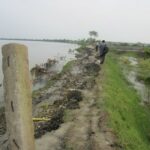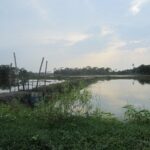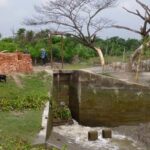Inception workshop
Background on the Living Polders Research Project
Bangladesh is home to one of the biggest and most densely populated deltas of the world, formed by sediments carried by the Ganges, Brahmaputra and Meghna River system. The construction of polders in the 1960s in order to decrease flood risk and salinity intrusion, resulted in high agricultural productivity on the coastal lands for 10-15 years. However since the 1980s, the polders have become a source of major environmental concern due to salinisation, land subsidence, and water logging problems caused by sedimentation in the channel beds. Within this context, the Living Polders research project aims to develop sustainable solutions to these increasing pressures through integrated polder management, based on building with nature principles, working with rather than against the forces of nature (e.g. temporarily opening up polders to benefit from natural sediment accretion to elevate polder surfaces, and deposit fertile nutrients), and taking into account the natural and social dynamics in the area.
Utrecht University has ample experience with studying building with nature techniques based on sediment management (see for example the blog contributions by Floris Keizer on suspended sediment, by Rémon Saaltink on the Marker Wadden project, and the work by Hans Middelkoop and others on the River Care project as well as Jasper Griffioen’s involvement in the Sand Motor project).
As part of the final step for the development of the Living Polders research proposal under the NWO Programme “Urbanizing Deltas of the World”, our team of researchers travelled to Bangladesh: Dr Frank van Laerhoven, Dr Jasper Griffioen, Dr Michiel van der Meulen, and Ariane Laporte-Bisquit. The objective of this trip was to consult with various local stakeholders and have a better understanding of the reality on the ground.
Meeting with stakeholders
Our first meeting was with the local NGO Jagrata Juba Shangha (JJS) led by Mr. ATM Zakir Hossain. JJS is an environmental and social development organisation working since 1985 in this region. We discussed the involvement of JJS as a local partner within this research project in order to share their expert knowledge and provide logistical support.
After our meeting with JJS, we had a stakeholder consultation workshop with a diverse group of 20 participants which included representatives of farmer organisations, government agencies, NGOs, Khulna University, and BUET. Through breakout group activities and plenary discussions, the different stakeholders shared their experiences and knowledge regarding some of the problems with polder management in the area. They expressed their concerns about sedimentation related problems and supported the Living Polders’ approach focused on more integrated sediment and water management. In addition, they also discussed livelihood options that people have in the polders and how these could be improved.
Dr Mallik Anowar from the Department of Environment stated that the local communities “are the real experts who know the actual situation on the ground”. Furthermore, several stakeholders stressed the importance of engaging with local communities living in the polders in order to strengthen community participation in decision-making processes.
Mr Mokbul Hossain Mintu, President of Khulna Press Club, actively participated in the stakeholder consultation workshop. As a result, our workshop received media coverage and an article was published in the Daily Purbanchal, a daily newspaper in Khulna.
- Participants reporting back after breakout group activities at the stakeholder consultation workshop
- Article in the local newspaper about our stakeholder consultation workshop
In follow up to the stakeholders’ inputs, we met the next day with local communities involved in Water Management Organisations (WMO), namely the Water Management Group (WMG) and the Water Management Association (WMA), active in polder number 30. The community members described how these organisations are structured and managed as well as their key activities with regards to water management and social development. One of the major challenges that they are experiencing is related to water logging problems caused by individuals blocking the internal canals in order to get access to roads. This is a prime example of the type of conflict over resources between individual interests and the common good, also known as “The Tragedy of the Commons”.
- Meeting with local communities involved in the Water Management Group.
- Meeting with the Project Manager of the Coastal Embankment Improvement Programme Md. Sarafat Hossain Khan
After our productive stakeholder engagements in Khulna, we travelled to Dhaka to meet with team leaders of current projects in Bangladesh. We discovered the art of patience and creativity to wade through Dhaka’s notorious traffic jams in order to meet with the following stakeholders:
- Guy Jones (Team Leader) and Boudewijn Sterk (Innovation Fund Manager) of the Blue Gold Programmefinanced by the Embassy of the Kingdom of the Netherlands in Dhaka, with the goal to reduce the poverty for 150,000 households living in 160,000 ha area of selected coastal polders in Khulna, Patuakhali and Satkhira provinces. The essence of the Blue Gold Program is first to establish and empower community organizations to sustainably manage their water resources and based on the priorities set by these community organisations deliver the services that they require in order to enhance their agricultural produce.
- Sarafat Hossain Khan (Project Coordinator) of the Coastal Embankment Improvement Programme(CEIP) funded by the World Bank and implemented by the Bangladesh Water Development Board (BWDB), the key government agency with respect to water resource management. The main objectives of CEIP are to a) increase the area protected in selected polders from tidal flooding and frequent storm surges, b) improve agricultural production by reducing saline water intrusion, and c) improve the Government of Bangladesh’s capacity to respond promptly and effectively to an emergency.
- Michiel Slotema (Policy Advisor) at the Embassy of the Kingdom of the Netherlands in Dhaka involved in water policy and management projects
During these meetings, we received helpful feedback, gained insight into the successes and challenges of various projects and explored the potential for future collaboration. The recognised value of our ideas resulted in the endorsement of the Living Polders consortium by Blue Gold and CEIP, respectively, through the issuing of letters of support.
- Meeting with local branch of CEIP/BWDB in polder number 35/3
Field trip in the polders
During our stay in Khulna, not only did we discuss with stakeholders about polder management but we actually went out in the field to see these polders with our own eyes. We observed some of the environmental problems related to polder management such as siltation of canals and land erosion.
We met with Md. Mainuddin, Executive Engineer of the Bagerhat O&M Division of BWDB, responsible for implementing the CEIP project in polder number 35/3. We learned about their interventions to address embankment erosion problems. For example, they are planning to construct new embankments further inland but this will result in the loss of some agricultural lands which will no longer be protected from flooding. In consequence, there is resistance and resentment from local communities as their livelihoods are being threatened by these new construction plans, reflecting some of the social tensions in the area.
- Crab farming in polder number 35/3
- Gate system at polder number 30
One of the most striking conclusions from our field visits was the fact that there is a lot of regional diversity and polders differ greatly in terms of biophysical conditions and land use activities. During our visit to polder number 35/3, we became aware of the pressures and conflicts between various land use activities. This area is under increasing pressures from urbanization, industrialization, and the expansion of shrimp and crab farming which has overall negative environmental impacts on the soil and water quality, agricultural yields, ecology and biodiversity. Moreover, there are serious conflicts between the shrimp farmers and rice farmers with regards to water management. Although polders were initially constructed to prevent saline water intrusion, the wealthy shrimp farmers have taken control of the sluice gates in order to allow in saline water for their own business purposes. High salinity is very detrimental to rice crop productivity, generating widespread discontent amongst the more vulnerable rice farmers. Therefore, this ongoing elite capture has important implications concerning the power dynamics in water resource management within the area.
Conclusion
During this trip we gained valuable insights into the complex problems faced by communities living within Bangladesh’s coastal polders. We developed a deeper understanding of the high natural and social dynamics in the southwestern region which will help us consolidate our research proposal. It was also a great opportunity to start establishing partnerships with local stakeholders and project managers towards further collaboration. Last but not least, this was a wonderful life experience as we discovered Bangladesh’s lush green landscapes, mighty meandering rivers, lovely people, delicious food, rich cultural heritage and bustling cities.


